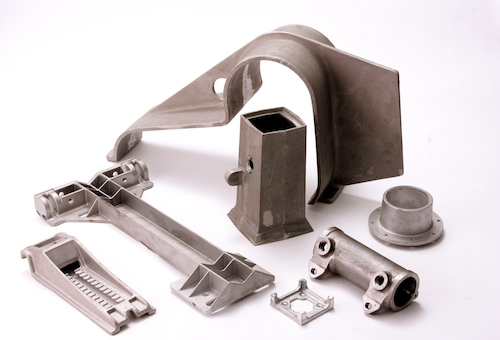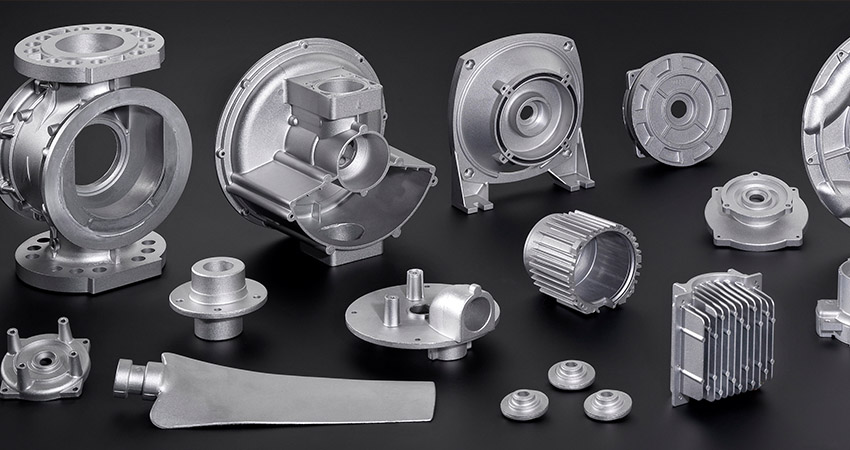Understanding the Manufacturing Refine and Upkeep Practices for Light Weight Aluminum Shop Products
The production procedure for light weight aluminum factory items is complex and calls for a complete understanding of numerous phases. From the melting of light weight aluminum at high temperatures to different casting techniques, each step plays an important function. Additionally, maintenance techniques assure tools stays effective and products are devoid of issues. Nevertheless, the intricacies of these procedures and their influence on product high quality raise vital inquiries concerning finest practices and innovative strategies in the market.
Review of Aluminum Shop Products
Light weight aluminum foundry items are vital parts in different sectors, providing a mix of lightweight toughness and rust resistance. These items are typically made use of in markets such as automotive, aerospace, and building and construction, where sturdiness and efficiency are paramount. Light weight aluminum's reduced thickness makes it a suitable material for applications calling for minimized weight without sacrificing architectural integrity. The flexibility of aluminum permits the development of intricate geometries, satisfying varied layout needs.
Moreover, aluminum factory items can be tailored with various alloys to boost certain buildings, such as improved thermal conductivity or boosted firmness. Their resistance to oxidation and rust warranties long life, making them suitable for both outdoor and interior applications. The mix of these qualities adds to the growing preference for aluminum in modern manufacturing. As sectors seek to enhance performance and sustainability, light weight aluminum shop products remain to play a vital function in fulfilling these demands.
Thawing Refine: Transforming Aluminum
The melting procedure is a basic step in the manufacturing of aluminum shop products, as it changes solid aluminum into a liquified state appropriate for casting. This procedure typically takes place in a heating system, where scrap light weight aluminum or ingots are heated up to temperature levels around 660 levels Celsius. The option of heating system-- be it electrical, gas, or induction-- affects the effectiveness and cost of melting.
Throughout melting, careful factor to consider is provided to the removal of contaminations, such as oxides and other contaminants, which can negatively impact the quality of the final product. Fluxes may be contributed to assist in this purification process, improving the fluidity of the molten steel.
Furthermore, temperature control is important to guarantee uniformity and prevent getting too hot, which can cause oxidation. The melting procedure not just prepares aluminum for casting however likewise plays a considerable duty in establishing the integrity and homes of the final foundry products.
Casting Strategies in Light Weight Aluminum Factory
Various casting techniques are employed in light weight aluminum factories to produce high-quality parts, each matched to different applications and requirements. Among one of the most generally utilized approaches are sand spreading, die casting, and financial investment casting. Sand casting uses a mix of sand and binder to create mold and mildews, allowing for huge parts and complicated shapes (aluminum metal casting). Die casting, characterized by the high-pressure injection of liquified light weight aluminum right into steel molds, generates accurate and repeatable elements, suitable for automation. Investment casting, or lost-wax casting, includes developing a wax design that is coated in a ceramic shell, making it possible for fine details and intricate styles. Each strategy has its benefits; sand casting is economical for low-volume manufacturing, while die spreading uses effectiveness for high-volume runs. Investment spreading is favored for parts requiring outstanding accuracy and surface area coating. Choosing the appropriate method depends upon variables such as manufacturing volume, component complexity, and material residential properties
Completing Processes for Light Weight Aluminum Parts
After casting strategies have actually formed the light weight aluminum components, completing processes play a substantial function in enhancing their functionality and visual charm. These processes usually include machining, surface therapy, and covering applications. Machining includes accurate removal of product to attain desired dimensions and surface top quality. This is important for ensuring that elements fit seamlessly into their intended applications.
Surface treatments, such as anodizing and polishing, are employed to enhance corrosion resistance and boost aesthetic qualities. aluminum metal casting. Anodizing, in specific, gives a protective oxide layer, making the aluminum extra resilient and visually enticing

Maintenance Practices for Durability
Executing routine upkeep techniques is vital for making certain the durability of aluminum foundry products. Regular inspections must be conducted to determine damage, as very early detection can prevent expensive repair services and prolong the life expectancy of parts. Cleaning tools and equipment on a regular basis reduces the danger of contamination, which can negatively affect product top quality. Lubrication of relocating components is likewise vital, as it reduces friction and wear, enhancing functional performance.
Additionally, the application of a preventative upkeep timetable aids in systematically resolving potential problems before they escalate (aluminum metal casting). This consists of monitoring for leaks, making sure correct positioning, and adjusting machinery. Personnel training on appropriate handling and upkeep methods cultivates a society of treatment, which is important for sustaining product integrity. Lastly, documenting upkeep activities offers important understandings right into efficiency trends, enabling educated decision-making concerning future maintenance approaches
Quality Assurance and Testing in Aluminum Foundry Manufacturing
Quality control and testing are paramount in aluminum foundry manufacturing, as they guarantee that end products satisfy defined criteria and consumer expectations. This process starts with basic material assessment, guaranteeing that light weight aluminum alloys abide with called for structures. Throughout the production cycle, in-process examinations are carried out to keep track of criteria like pressure, material, and temperature flow.
When spreading is full, different examinations-- such as dimensional checks, aesthetic evaluations, and non-destructive screening-- are performed to determine any kind of defects. Mechanical residential or commercial properties, including tensile strength and solidity, are examined through standard testing approaches.
Adherence to market standards, such as ISO and ASTM, is crucial for making sure product quality. Analytical process control strategies are typically used to assess production information and assist in constant renovation. By executing rigorous quality assurance actions, aluminum factories can improve product integrity and reduce waste, inevitably resulting in higher consumer fulfillment and operational effectiveness.
Often Asked Inquiries
What Are the Ecological Effects of Light Weight Aluminum Factory Workflow?
Aluminum shop procedures can result in substantial environmental influences, consisting of air contamination from emissions, water contamination from waste discharge, and energy usage contributing to greenhouse gas discharges, ultimately influencing local environments and neighborhood health.
Exactly How Do Light Weight Aluminum Rates Affect Factory Production Decisions?
Aluminum prices significantly influence factory production choices; greater costs may cause lower result or increased efficiency measures, while lower rates can urge enhanced manufacturing and financial investment in new innovations to improve competitiveness and success.
What Precaution Are Essential in Aluminum Foundries?
Essential safety and security actions in light weight aluminum factories include safety equipment, appropriate ventilation to lower breathing of fumes, routine equipment upkeep, training on emergency situation procedures, and adherence to safety and security methods to stop mishaps and injuries among employees.
Can Light Weight Aluminum Be Recycled, and How Is It Refined?
Aluminum can indeed be reused. The process involves collection, melting, and changing the material right into new items, substantially decreasing power usage and ecological effect compared to key light weight aluminum manufacturing while protecting worldly high quality.
What Are Common Flaws in Aluminum Casting and Their Reasons?

The production procedure for light weight aluminum factory products is intricate and calls for a thorough understanding of multiple phases. Light weight aluminum factory products are essential components in various industries, offering a mix of light-weight toughness and corrosion resistance. The melting procedure is an essential step in the manufacturing of light weight aluminum foundry items, as it transforms solid light weight aluminum into a liquified state ideal for casting. Carrying out regular upkeep methods is vital for guaranteeing the long life of light weight aluminum shop items. Quality control and screening are extremely important in light weight aluminum foundry manufacturing, as they ensure that final products satisfy see this website specified requirements and customer expectations.